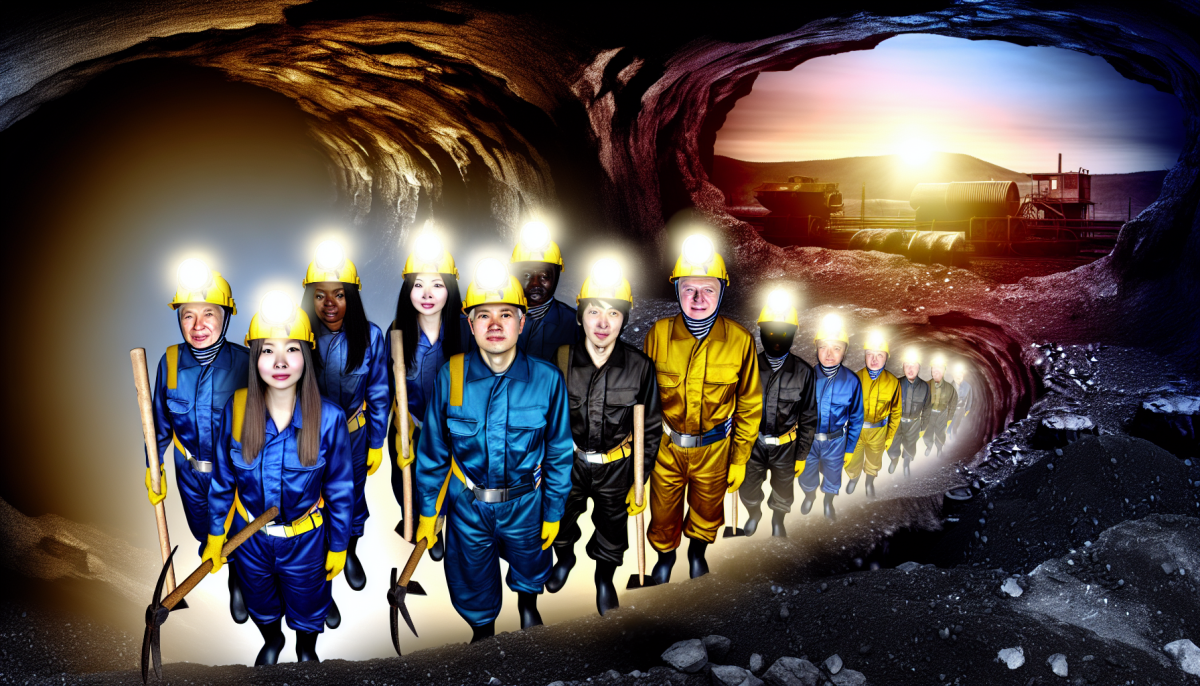The Tragic History of Coal Mining Accidents in West Virginia
West Virginia, with its rich coal deposits, has been a vital player in the American coal mining industry for over a century. The state's rugged landscapes and abundant coal reserves have made it a key area for coal production, fueling the nation's industries and power generation. However, this progress has come at a significant cost. Coal mining, one of the most hazardous occupations, has led to numerous accidents over the years, resulting in loss of life and devastating injuries. This article delves into the tragic history of coal mining accidents in West Virginia, highlighting the top 10 accidents that have occurred at West Virginia coal mines.
1. Monongah Mining Disaster, 1907
The Monongah mining disaster is the deadliest coal mining accident in American history. On December 6, 1907, an explosion in the Monongah mines killed 362 miners, including children. This tragedy brought widespread attention to the dangers of coal mining and led to significant reforms in mining safety standards.
2. Eccles Mine Disaster, 1914
On April 28, 1914, the small town of Eccles experienced one of the most heart-wrenching accidents in the state's mining history. An explosion at the Eccles No. 5 and No. 6 coal mines resulted in the death of 183 miners. This disaster underscored the need for improved mine safety and better emergency response strategies.
3. Farmington Mine Disaster, 1968
The Farmington mine disaster, which occurred on November 20, 1968, remains one of the most pivotal events in U.S. coal mining history. A series of explosions at the Consol No. 9 coal mine in Farmington killed 78 miners. The tragedy led to significant legislation, including the Coal Mine Health and Safety Act of 1969, which aimed to improve safety standards in coal mines.
4. Sago Mine Disaster, 2006
The Sago mine disaster brought the dangers of coal mining back into the national spotlight in the 21st century. On January 2, 2006, an explosion trapped 13 miners underground. After a two-day rescue operation, only one miner was found alive. This incident highlighted the importance of emergency shelters and communication systems in mines.
5. Upper Big Branch Mine Disaster, 2010
The Upper Big Branch mine disaster is one of the most recent and deadliest mining accidents in West Virginia. On April 5, 2010, an explosion caused by methane and coal dust killed 29 miners. This disaster led to significant scrutiny of mine safety practices and the enforcement of mining regulations.
6. Hawks Nest Tunnel Disaster, 1930s
While not a mining accident in the traditional sense, the Hawks Nest Tunnel disaster involved miners and is one of the worst industrial disasters in U.S. history. During the construction of a tunnel through Gauley Mountain in the 1930s, hundreds of workers, many of whom were miners, died from silicosis, a lung disease caused by the inhalation of silica dust.
7. Layland Mine Disaster, 1915
The Layland mine disaster occurred on March 2, 1915, when an explosion killed 112 miners. This disaster highlighted the dangers of methane gas in coal mines and led to calls for better ventilation systems.
8. Lick Branch Mine Disaster, 1909
On December 15, 1909, an explosion at the Lick Branch Mine in West Virginia resulted in the deaths of 50 miners. The incident underscored the need for strict enforcement of mining safety regulations and better inspection routines.
9. Benwood Mine Disaster, 1924
The Benwood mine disaster of April 28, 1924, was caused by a coal dust explosion, killing 119 miners. This tragedy prompted demands for improved dust control methods in coal mines to prevent such explosions.
10. Scotia Mine Disaster, 1976
Although not in West Virginia, the Scotia mine disaster had a profound impact on mining safety nationwide. On March 9 and 11, 1976, two explosions at the Scotia mine in Kentucky killed 26 miners and rescuers. The disaster led to further reforms in mine safety regulations and enforcement.
The coal mining industry has been a cornerstone of West Virginia's economy and identity. However, the history of coal mining in the state is also marked by tragic accidents that have cost hundreds of lives. These incidents serve as solemn reminders of the risks that miners face every day and the importance of continuous improvement in mining safety standards. As we move forward, it is crucial to remember the lessons learned from these tragedies to ensure the safety and well-being of miners everywhere.







